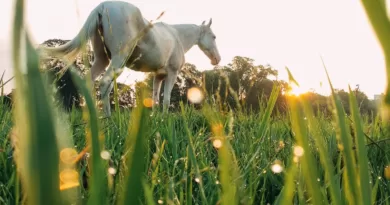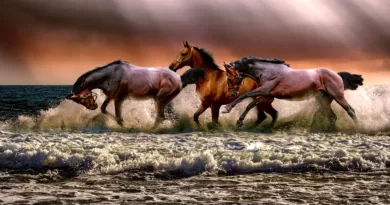Do Horses Have Udders
The Anatomy of Female Horses: Understanding Mammary Glands
The mammary glands of female horses play a vital role in their reproductive function and nurturing their young. These glands, located along the underside of the mare’s abdomen, are responsible for producing milk to feed foals after they are born. Each mammary gland consists of numerous lobes, which are further divided into smaller lobules. These lobules contain clusters of alveoli, small sac-like structures where milk is produced. The mammary glands are supported by a network of blood vessels and connective tissue, ensuring the efficient delivery of nutrients and removal of waste products during the milk production process.
The development and function of the mammary glands in horses are influenced by hormonal changes, specifically those associated with pregnancy and lactation. When a mare becomes pregnant, her mammary glands undergo significant growth and development to prepare for milk production. The production and release of hormones, such as estrogen and progesterone, stimulate the growth and differentiation of the mammary gland tissue. These hormones also help regulate milk production and release, ensuring that the foals receive the necessary nutrition for their growth and development.
Mares and Milk Production: Exploring Reproductive Functions
Mares play a crucial role in the process of milk production, which is a key element of their reproductive functions. Milk production, also known as lactation, is a vital process that allows mares to nourish and nurture their young. This reproductive function begins after the mare gives birth to a foal and continues throughout the lactation period. During this time, the mare’s mammary glands undergo significant changes to accommodate the production and release of milk.
The process of milk production in mares is regulated by a complex interplay of hormones within their reproductive system. Following the foal’s birth, the hormone prolactin is released, stimulating the mammary glands to start producing milk. Alongside prolactin, other hormones such as oxytocin come into play, helping to stimulate the release of milk from the mare’s mammary glands. This intricate hormonal dance ensures that the foal receives the necessary nourishment from the mare’s milk, facilitating its growth and development. Understanding the reproductive functions involved in mares’ milk production provides valuable insights into the fundamental biological processes that ensure the survival of their offspring.
The Purpose of Udders in Mammals: Insights from Other Animals
Udders, the prominent glandular structures found in mammals, serve a vital purpose in their reproductive and nurturing functions. While commonly associated with cows, udders are present in other animals as well, each serving a slightly different purpose. In goats, sheep, and cows, the udder is primarily responsible for milk production and nourishing their young. These mammals have multiple teats on their udders, allowing for the feeding of multiple offspring simultaneously or in succession. Similarly, in dogs and cats, the udder plays a crucial role in lactation and feeding their offspring, ensuring proper development and growth.
Interestingly, udder-like structures can also be found in non-mammalian species. For instance, some reptiles, such as snakes and lizards, possess specialized glands that resemble udders. These glands are involved in producing and secreting substances used for defense or attracting mates. In birds, the uropygial gland, also known as the preen gland, is located near the base of the tail and functions to secrete oils used for grooming and maintaining feather health. Although not identical to mammalian udders in structure or function, these examples demonstrate the diverse adaptations that have evolved in different animal groups to fulfill similar purposes.
Dispelling the Myth: Clarifying the Difference Between Udders and Teats
Udders and teats are both integral parts of the mammary system in mammals, including horses. However, there is often confusion regarding their differences and functions. To clarify, udders refer to the entire mammary gland complex in female animals, consisting of multiple milk-secreting glands. In contrast, teats are the individual projections or nipples through which milk is expelled.
One common misconception is that udders and teats are interchangeable terms, but this is not accurate. Udders are the larger, more complex structures that house the milk-secreting glands, while teats are the smaller, cylindrical protrusions that provide an outlet for milk. Understanding this distinction is crucial for horse owners and breeders, as it affects their ability to identify and address any issues related to the horse’s mammary system. Sorting out these misconceptions will lead to a better understanding of the anatomy of female horses and their reproductive functions.
Udder-Like Structures in Horses: Debunking Misconceptions
Horses, like many mammals, possess udder-like structures that often lead to misconceptions regarding their purpose and function. These structures, located on the lower abdomen of female horses, resemble udders found in cows and other dairy-producing animals. However, it is important to clarify that horses do not possess functional udders capable of producing milk for consumption. Despite this, these udder-like structures, often referred to as “false udders,” serve a crucial role in the reproductive functions of mares.
The primary misconception lies in assuming that these udder-like structures in horses play a similar role to true udders found in cows. While both structures are located in similar areas of the abdomen, their functions differ significantly. True udders in cows, as well as in some other mammals, are designed to produce and store milk, nourishing their young. In contrast, the udder-like structures in horses are non-functional and do not possess milk-producing capabilities. Rather, they primarily serve as indicators of a mare’s reproductive status, undergoing changes in size, shape, and texture in response to hormonal fluctuations during the estrus cycle.
Lactation in Horses: Unveiling the Mechanisms Behind Milk Production
During lactation, the process by which female horses produce milk, several mechanisms are at play to ensure the nourishment and growth of the foal. The mammary glands, located in the udder of the mare, are responsible for milk production. These glands consist of numerous lobules, which are made up of milk-secreting cells called alveoli. It is within these alveoli that the actual production of milk takes place.
The production of milk in horses is regulated by the hormone prolactin, which stimulates the alveoli to produce and release milk. Prolactin is primarily secreted by the anterior pituitary gland, located at the base of the brain. The release of prolactin is controlled by a complex interplay of hormonal signals from the hypothalamus, a region of the brain responsible for regulating various bodily functions. Additionally, the sensory stimulation of suckling by the foal triggers the release of prolactin, further promoting milk production in the mare. Together, these mechanisms ensure a steady supply of milk to nourish and nurture the growing foal.
Nurturing Foals: How Horses Feed their Young
When it comes to nurturing their foals, horses have a unique way of providing nourishment. The primary source of sustenance for foals is, of course, their mother’s milk. Unlike some other mammals where the nursing period is relatively short, foals rely on their dam’s milk for several months after birth. The mare’s udder, located towards the back of her belly, plays a crucial role in this process. It is where the milk is stored and delivered to the foal.
During the first few hours after birth, the foal instinctively searches for the udder, guided by the scent of its mother’s milk. Once they locate it, they latch onto the mare’s teat, which is a small protrusion on the udder through which the milk is released. The foal’s suction triggers the release of oxytocin hormone in the mare, causing the milk to flow. This instinctual behavior ensures that the foal receives the vital nutrients and antibodies present in the mare’s milk, helping to boost their immune system and support their growth.
Developmental Changes: Udders Throughout a Horse’s Life Cycle
The udders of a horse undergo significant developmental changes throughout its life cycle. During the early stages of a filly’s life, the udders are usually small and undeveloped. As she matures and reaches sexual maturity, hormonal changes trigger the growth and development of the mammary glands. This process is commonly observed in mares that have gone through the process of pregnancy and lactation. Once a mare becomes pregnant, her udders enlarge and become more prominent as they prepare for the production and supply of milk to feed the growing foal.
As the mare continues through pregnancy, her udders undergo further changes, with gradual enlargement and increased blood supply. These changes are necessary to support the development of the mammary tissue and ensure an adequate milk supply for the foal after birth. After the foal is born, the udders continue to adapt and change as the mare begins lactation. The mammary glands become fully functional, producing milk to nourish the newborn. During this period, the udders may become engorged with milk, and the mare may experience discomfort or pain. Regular nursing by the foal helps to stimulate milk production and relieve the pressure in the udders.
Understanding the developmental changes in a horse’s udders throughout their life cycle is crucial for horse owners and breeders. It allows them to monitor the health and well-being of the mare and ensure proper care during pregnancy and lactation. Additionally, recognizing the normal changes in the udders helps distinguish them from any abnormal conditions or diseases that may arise. By providing appropriate support and management, horse owners can promote optimal udder health and ensure successful milk production for the nourishment of foals.
Breeding and Udder Health: Factors Affecting Milk Production in Mares
Factors such as genetics, age, and hormonal balance play a significant role in determining the milk production capacity of mares. When it comes to breeding, certain breeds are known for their exceptional milk production abilities, while others may have a lower yield. Breeding a mare with a history of strong milk production can increase the chances of obtaining a foal that will thrive on its mother’s milk. Additionally, the age of the mare can affect milk production, as younger mares may produce less milk compared to older, more experienced ones.
Another crucial factor that influences milk production in mares is hormonal balance. Hormones, particularly prolactin and oxytocin, are vital for initiating and maintaining lactation. Prolactin stimulates the development of mammary glands and production of milk, while oxytocin triggers the release of milk from the mammary glands. Any hormonal imbalances or disruptions can result in reduced milk production or even complete suppression of lactation. It is therefore crucial to closely monitor and maintain the hormonal health of mares to ensure optimal milk production for their foals.
Understanding Horse Anatomy: Identifying the Mammary System in Equines
The mammary system in equines, particularly female horses, plays a crucial role in their reproductive functions. These complex structures, commonly referred to as udders, are responsible for milk production and nourishing the young foals. Located on the underside of the abdomen, near the hindquarters, the mammary glands are composed of several lobes that are connected to a network of ducts. It is important to note that the number of mammary glands can vary from horse to horse, with some having two pairs while others may have only one.
What is the mammary system in equines?
The mammary system in equines refers to the anatomical structures responsible for milk production and nourishment of foals in female horses.
What are mammary glands?
Mammary glands are specialized organs in female mammals, including horses, that produce and secrete milk.
Do male horses have mammary glands?
While male horses do possess rudimentary mammary glands, they are typically non-functional and do not produce milk.
What is the purpose of udders in horses?
Udders in horses serve as the storage and delivery system for milk produced by the mammary glands, allowing foals to nurse and receive nourishment.
Are udders and teats the same thing?
No, udders and teats are not the same. Udders refer to the entire mammary gland complex, whereas teats are the individual structures through which milk is released.
Do all mammals have udders?
No, not all mammals have udders. While udders are common in mammals that produce milk, such as cows and goats, other mammals may have different structures for milk production and nourishment.
Can horses produce milk even if they are not nursing a foal?
Yes, under certain circumstances, horses can experience lactation even if they are not actively nursing a foal. This can be caused by hormonal imbalances or medical conditions.
How long do horses lactate?
Horses usually lactate for around 4-6 months after giving birth, during which they provide milk for their foals.
Can horses lactate without being pregnant?
It is very rare for horses to lactate without being pregnant. Lactation is typically triggered by the hormonal changes associated with pregnancy and birth.
What factors can affect udder health and milk production in mares?
Factors that can affect udder health and milk production in mares include nutrition, genetics, hormonal balance, stress levels, and overall health and well-being.




